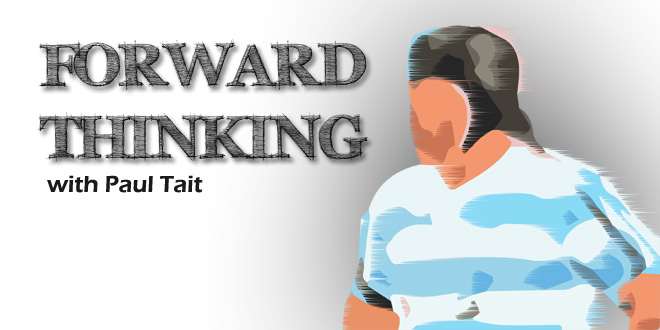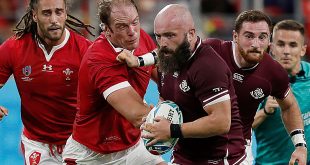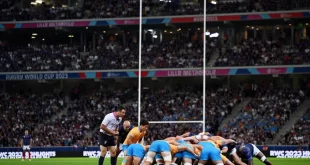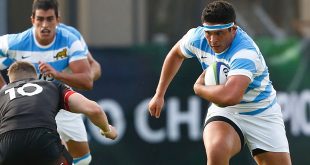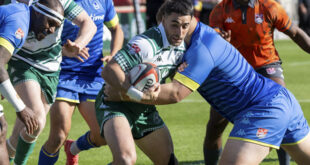Compiling potential and probable rosters and starting XV’s for international duty is an activity employed by many. For some it is about fantasy selection while for others it is a genuine means to an end of staying up to date.
Knowing where a team stands and what is required for improvement can greatly be simplified by comparing the resources of one particular team with that of others. In the event of an untimely injury or an unexpected international retirement identifying alternative players is greatly simplified.
Eligibility
Knowing World Rugby’s player eligibility laws and how to exploit them to one’s advantage is also extremely beneficial. The three year player eligibility rule and the parent and grantparent laws, as outlined in Regulation 8, are proving to be particularly influential. So much so that there is, in fact, no shortage of unions who have specific employees whose role it is to identify all eligible players and target them.
In the recent Six Nations Championship there were glaring examples with teams having absolutely no problem in fielding players born, raised and prepared entirely abroad with there even being no shortage of players with prior experience representing another country at junior level.
Dario Chistolini, Bernard Le Roux, Richardt Strauss, CJ Stander, WP Nel, Scott Spedding, Josh Strauss and Dries van Schalkwyk were all born and raised in South Africa with most playing under 19’s or under 20’s for the country. Similarly Gareth Anscombe, John Hardie, Sean Maitland and Jared Payne, played for New Zealand at u20 or u21 level.
A serious flaw is that Anscombe can play for Wales yet no Welsh under 20 player is entitled to play for another country, as all Welsh u20’s players have their eligibility captured. Another head-scratching case is that of New Zealander, Uini Atonio who played u20’s for Samoa but now plays for France.
Defining Tier 1 Players
Make no mistake the exercise of identifying and capturing player eligibility is serious business, though this is rarely, if ever, reported. Also going unreported is the status of such players who make the transition. Players like Hardie, Nel and Strander are identified as South Africans but not Tier 1 players.
It is not the former but the latter which matters most. The reason being that they came through highly developed systems in their native countries and having failed to be selected by their home countries at the elite level they were systematically targeted and now play for others.
From a young age they were exposed to a high level of rugby, such a level which enables the production process of players into top level athletes to enter Super Rugby academies and senior rosters after, and even before, completing High School. In other words the cost of Scotland or Ireland to nationalize a WP Nel or a CJ Stander was extremely low compared to a player such as Tim Visser who did not come through a Tier 1 system.
The same is true of many countries including countries lacking the means to likely ever be professional. Take Samoa and Tonga who actively target Australian / New Zealand born and raised athletes who meet Regulation 8 requirements. These two countries had 13 and 12 players born abroad on their respective rosters for last year’s Rugby World Cup. All 25 qualified for Samoa / Tonga via a parent and, like John Hardie in the case of Scotland, many never played in Samoa / Tonga prior to be capped.
In this year’s Six Nations championship the unions benefited by improving their rosters with many players arriving in their adopted countries as professional players. What this showcases is that countries with professional teams are able to cap those from abroad and actively do so.
The extent of this can be seen in Scotland’s team that faced Ireland in the final round. Six players started who were produced by other unions – John Hardie, WP Nel, Tommy Seymour, Tim Swinson, Tim Visser and Ryan Wilson. In addition others were used in earlier games or as replacements such as Josh Strauss.
Of them Seymour and Visser are playing for a Tier 1 union who reached the final 8 of Rugby World Cup 2015 but both were born in unions not classified as Tier 1. This crucial point serves to be elaborated on to explain exactly what does and does not constitute a Tier 1, 2 and 3 player.
Tier 2 Status
I have seen the name of Leicester Tigers’ winger Telusa Veainu appear in a number of Tier 2 World XV’s. The player in question plays at the top level in England, making him a Tier 1 player. More importantly, prior to being capped by Tonga in 2015 the New Zealand born and raised Veainu had played Super Rugby for the Highlanders, Crusaders and Melbourne Rebels and was a New Zealand u20 player in 2010.
Quite simply there is nothing about Veainu which makes him a Tier 2 player. His case is identical to many players who go on to play for Samoa and Tonga based on the eligibility laws. The only thing that differentiates Veainu from Hardie, Nel or Anscombe is that he is capped by a Tier 2 union.
Who one represents cannot be used to classify a player. There is, after all, a fundamental difference between Jamie Cudmore on the one hand and Liam Chisholm on the other. Both are Canadian international second-rowers but one is fully professional with years of plying his trade in France and the other is a home based amateur.
Tier 1 players are thereby quite simply players who train and play full time under advanced structures which meet that of Tier 1 standards. They need to be contracted on a full time basis to a club playing in a fully professional competition either of the first or, in certain instances, the second division.
Take the limited success of Benetton Treviso and Zebre as explanations. They belong to a Tier 1 union and play in a fully professional Tier 1 league, making their players Tier 1. Yet Italy played in the Six Nations with Campionato Nazionale Eccellenza players including Mattia Bellini and David Odiete who are not Tier 1 athletes due to them not playing for an Italian Tier 1 side. Their involvement with the test team gives them part-time Tier 1 status.
In countries including France, New Zealand and South Africa the situation is different due to the Pro d2, Mitre 10 Cup and Currie Cup being of a superior level. They are below that of the Top 14 and Super Rugby but are fully professional in terms of standard and infrastructure, unlike the Campionato Nazionale Eccellenza. Japan’s Top League is a similar example with the players being of the Tier 2 variety while those at the Sunwolves are Tier 1.
Defining Lower Tiers
Lower divisions in France, though, are different. A player at Nevers such as Samoa’s Fa’atoina Autagavaia is not exposed to comparable conditions to one at Carcassonne such as Uruguay’s Felipe Berchesi.
The clear difference simply places Berchesi in a superior environment to that of Autagavaia. The Tero is playing second division rugby in France but in a competition which arguably rivals the level of the lower sides in the Guinness Pro 12. Autagavaia in contrast is, at best, a lower Tier 2 player despite playing for a leading Tier 2 rugby nation.
Like many others Berchesi is playing professional club matches in a competition with numerous clubs who could be deemed to be at the level, or arguably above, of the aforementioned Italian sides in the Guinness Pro 12. Like Agustín Ormaechea he ought to be considered as a Tier 1 player while Autagavaia is a Tier 2 player involved in a competition of a similar standard to that of Bellini.
A Tier 2 player is Simply someone involved in a lower level professional environment playing either part-time or full time. Herein lies the distinction as a Tier 3 player is strictly amateur.
This simple explanation explains why the USA Eagles competed well in the first half at the World Cup against Scotland yet were poor throughout against South Africa. A short turn-around complicated matters but this takes nothing away from the reality that those who started against the Springboks were overwhelmingly Tier 3 players.
Fully professional Tier 1 players in 2015 who faced Scotland but not South Africa included Eric Fry, Titi Lamositele, Takudzwa Ngwenya, Thretton Palamo, Greg Peterson, Hayden Smith and Chris Wyles. Only two Tier 1 state players, them being, Samu Manoa and Blaine Scully started both games. Nine Tier 1 players is many more than that which Namibia or Uruguay had and also this highlights the difference.
Hopefully by reading this edition of Forward Thinking you appreciate my argument: success requires Tier 1 resources. Argentina got to the Semi Finals in 2007 by having 14 of the 15 starters, Horacio Agulla the exception, as professionals. Of them 13 were playing at the top level in England, France or Ireland. Now they are harnessing their talent to remain competitive. To join them Canada and the USA need World Cup rosters in 2019 without amateur athletes. PRO Rugby is a great opportunity at bridging the gap.
 Americas Rugby News Rugby news from across the Americas!
Americas Rugby News Rugby news from across the Americas!
